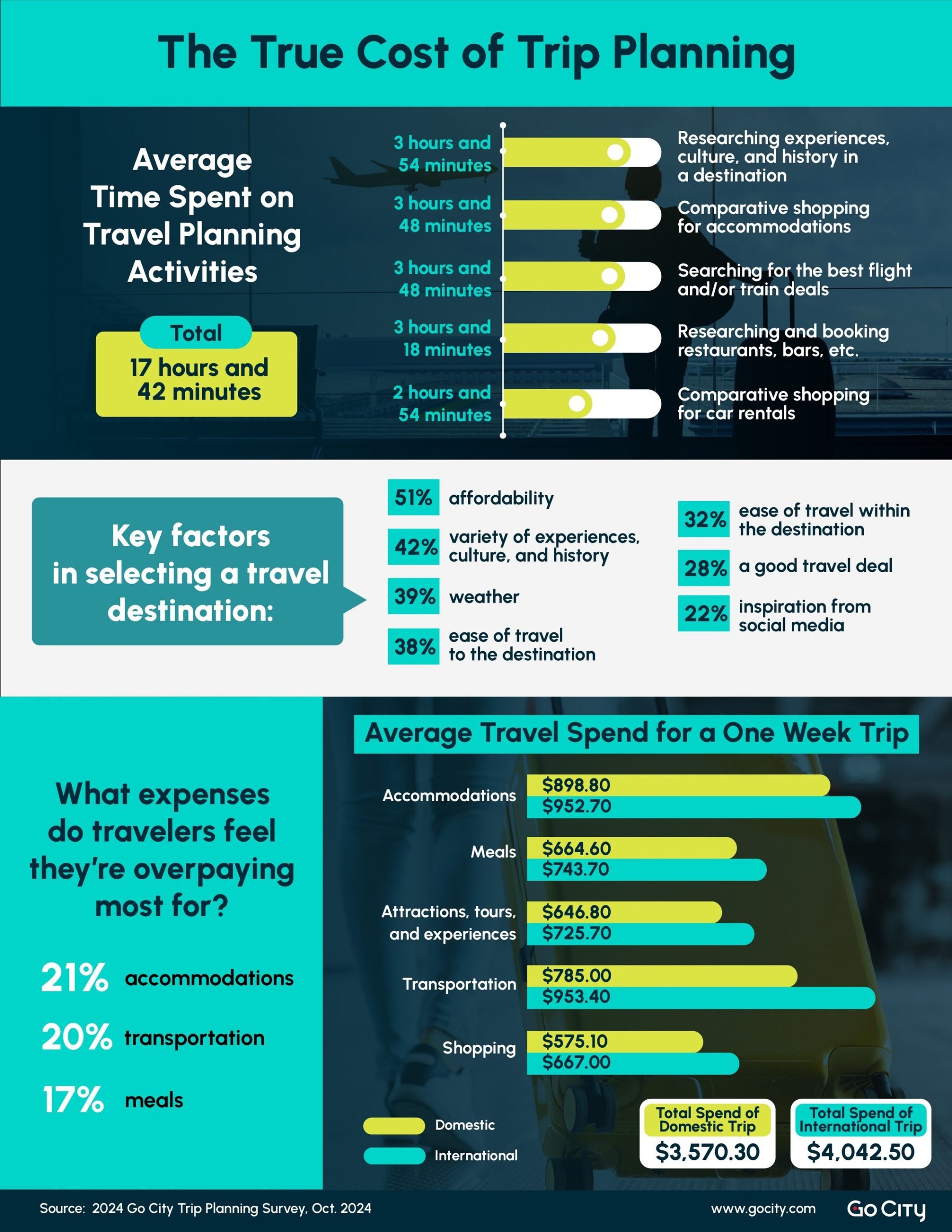
Go City Survey Reveals Travelers Struggle With Overspending, Long Planning Hours, and Tech Adoption
Go City’s latest survey uncovers a surprising truth: travelers are leaving money and time on the table when planning trips. Conducted with Talker Research, the survey polled 2,000 frequent U.S. travelers, exposing trends that shed light on their biggest pain points and missed opportunities.
Top Concerns: Money, Time, and Stress
Overspending topped the list of traveler woes, with 44% of respondents identifying it as their biggest pain point. Although 51% prioritize affordability when choosing destinations, significant costs for lodging (21%), transportation (20%), and meals (17%) remain key challenges.
Time is another sore spot. The average American spends nearly 18 hours planning a trip, including researching attractions and comparing prices. A chunk of that—almost four hours—is devoted solely to cultural and historic experiences. For some, planning can stretch to a mind-boggling 21 hours.
Packing (26%), coordinating plans for group satisfaction (17%), and missing transportation connections (21%) round out the list of frustrations.
Social Media Leads, But AI Lags Behind
Social media has become a popular planning tool, especially for Gen Z, with 51% turning to platforms like Instagram and TikTok for travel inspiration. Across all ages, 22% said they were inspired to visit destinations based on what they saw online.
However, only 15% of travelers use AI-powered tools to plan their trips, signaling untapped potential for saving time and money. Go City’s Chief Commercial Officer Judy Gauthier believes travelers are missing out on AI’s benefits.
“The fact that 85% of respondents avoid AI tools shows there’s still a learning curve,” Gauthier said. “Travelers don’t yet see how AI can streamline planning and reduce costs.”
Generational Insights: Who’s Visiting What?
The survey revealed generational differences in travel habits. Millennials and Gen X visit slightly more attractions in their home cities than Gen Z, who average fewer than the national norm of 4.4 visits per person.
High ticket prices remain the top reason for skipping local landmarks. Crowds, long lines, and uncertainty over which attractions are “worth it” also keep people away. Iconic locations like the Grand Canyon, local aquariums, and even the Statue of Liberty remain unvisited by many.
Go City’s Solution
Go City hopes its new Trip Planning tool will address these concerns. The tool builds personalized itineraries in seconds, considering factors like trip duration, attraction preferences, and operational hours. Whether you’re a detailed planner or a last-minute adventurer, the tool aims to save time and reduce the stress of juggling endless options.
Go City’s attraction passes also tackle affordability, offering savings of up to 50% compared to individual ticket costs. Options like the All-Inclusive Pass allow unlimited entries for a set period, while the Explorer Pass lets travelers pick a set number of attractions to visit within 60 days.
Looking Ahead
As 2025 approaches, travel habits are shifting, influenced by technology, affordability, and generational preferences. Go City’s survey highlights the opportunities travelers have to plan smarter, spend less, and explore more—whether at home or abroad.